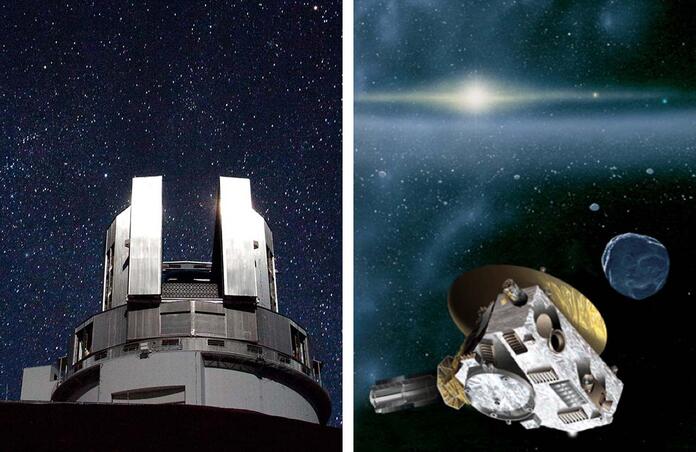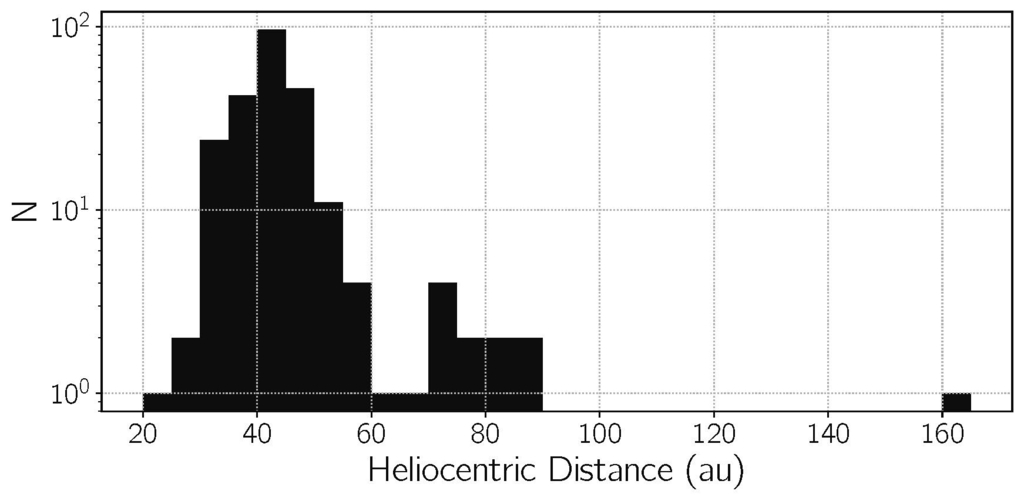New objects found beyond edge of Kuiper belt

A cluster of bodies beyond the outer edge of the Kuiper belt have been discovered, pointing towards the potential existence of a population of small bodies further out that are yet to be discovered. The observations were made using the ultra-widefield prime focus camera on board the Subaru telescope. Such results provide crucial insight into the formation of the solar system, most importantly suggesting that our solar system is more similar to other planetary systems than first thought.
These findings were obtained by an international collaboration between the Subaru telescope and NASAs New Horizons spacecraft, which travels through the outer solar system. The New Horizon spacecraft was first launched in 2006, with the primary goal of observing the surfaces of the outer solar system bodies up close for the first time. The spacecraft successfully completed a flyby of pluto in 2015, followed by a flyby of Arrokoth in 2019, one of the objects in the Kuiper belt.
In total, five spacecrafts have flown to the outer solar system. However, New Horizons is the only one to fly through the Kuiper belt whilst observing objects inside it. Observing Kuiper belt objects from the ground has its limitations, since we can only look at them at small solar phase angles. However, on a spacecraft they can be observed at a range of phase angles, using the reflection characteristics to estimate the surface properties of the object. The only spacecraft capable of this is New Horizons, but the problem is that the camera has a narrow field of view, so it can’t discover Kuiper belt objects alone.
This is where the Subaru telescope can help. This spacecraft has a wide field camera, making it more than able to point out a number of Kuiper belt objects. These are then narrowed down to a list of objects New Horizons can flyby and observe. The collaboration began in 2004.

Deeper observations using the Hyper Suprime-Cam (HSC) onboard Subaru commenced in 2020, uncovering 239 objects by 2023. Majority of the objects discovered with HSC are within 30-55AU from the sun, thought to be within the Kuiper belt. However, an additional cluster of 11 objects in the 70-90 AU region was also apparent, separated by a valley at 55-70 AU. This valley has not been reported in previous observations. This hints towards a new population of Kuiper belt objects at 70-90 AU.
There has been growing evidence of objects beyond the outer edge of the known Kuiper belt. This study in particular is significant, since the large number of objects found in a small search area can’t be categorised as flukes or false positives. The 11 new objects appear to be a new class of objects orbiting in a ‘ring’ separated from the known Kuiper belt by a ‘gap’. This ring and gap structure has been well documented on the edge of many developing planetary systems observed by the ALMA radio telescope array in Chile.
"If this is confirmed, it would be a major discovery. The primordial solar nebula was much larger than previously thought, and this may have implications for studying the planet formation process in our solar system," says Dr. Fumi Yoshida from the University of Occupational and Environmental Health Sciences and the Planetary Exploration Research Center, Chiba Institute of Technology.
To understand the exact orbits of the objects discovered, the team are continuing observations with HSC. "I think the discovery of distant objects and the determination of their orbital distribution are important as a stepping stone to understanding the formation history of the solar system, comparing it with exoplanetary systems, and understanding universal planet formation," Dr. Yoshida explains.
--
Cover image: NAOJ/Southwest Research Institute
Journal sources:
Marc W. Buie et al, The New Horizons Extended Mission Target: Arrokoth Search and Discovery, arXiv (2024). DOI: 10.48550/arxiv.2403.04927
Wesley C. Fraser et al, Candidate Distant Trans-Neptunian Objects Detected by the New Horizons Subaru TNO Survey, arXiv (2024). DOI: 10.48550/arxiv.2407.21142
